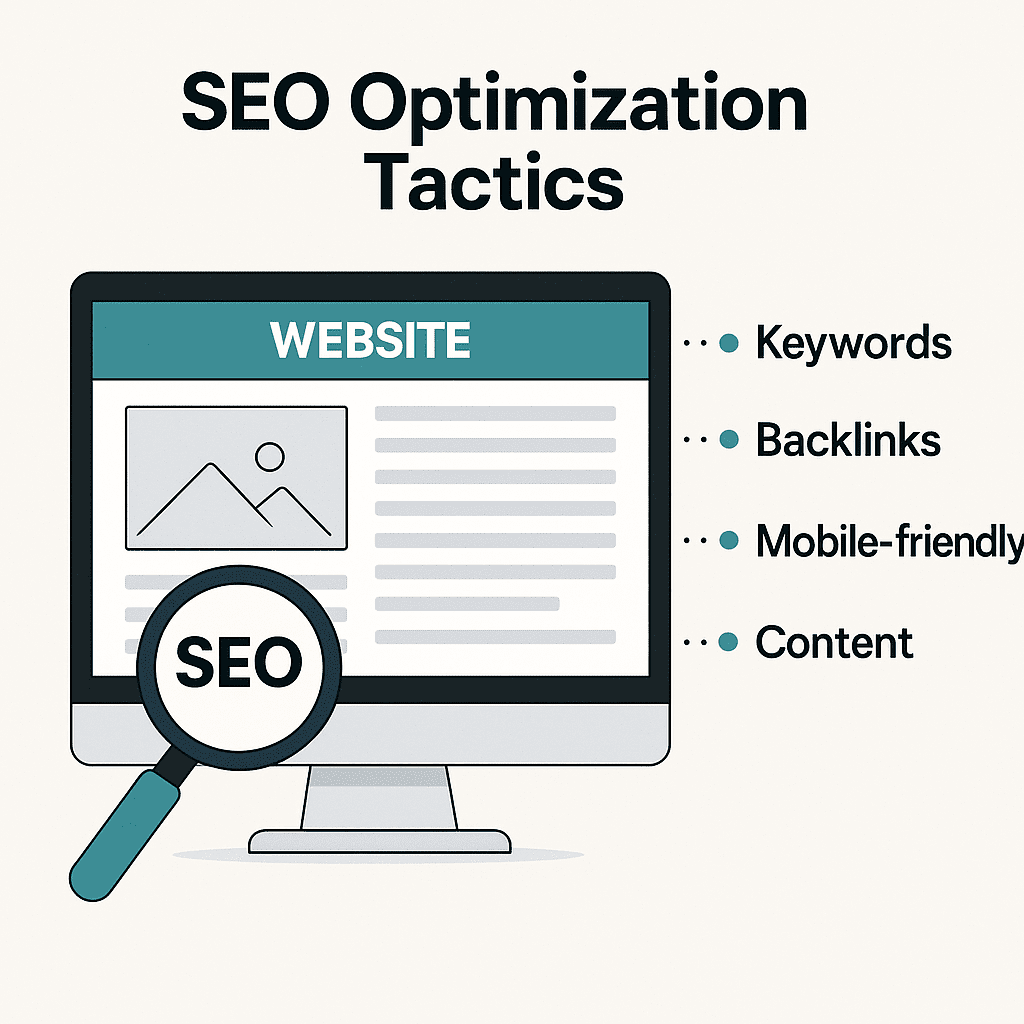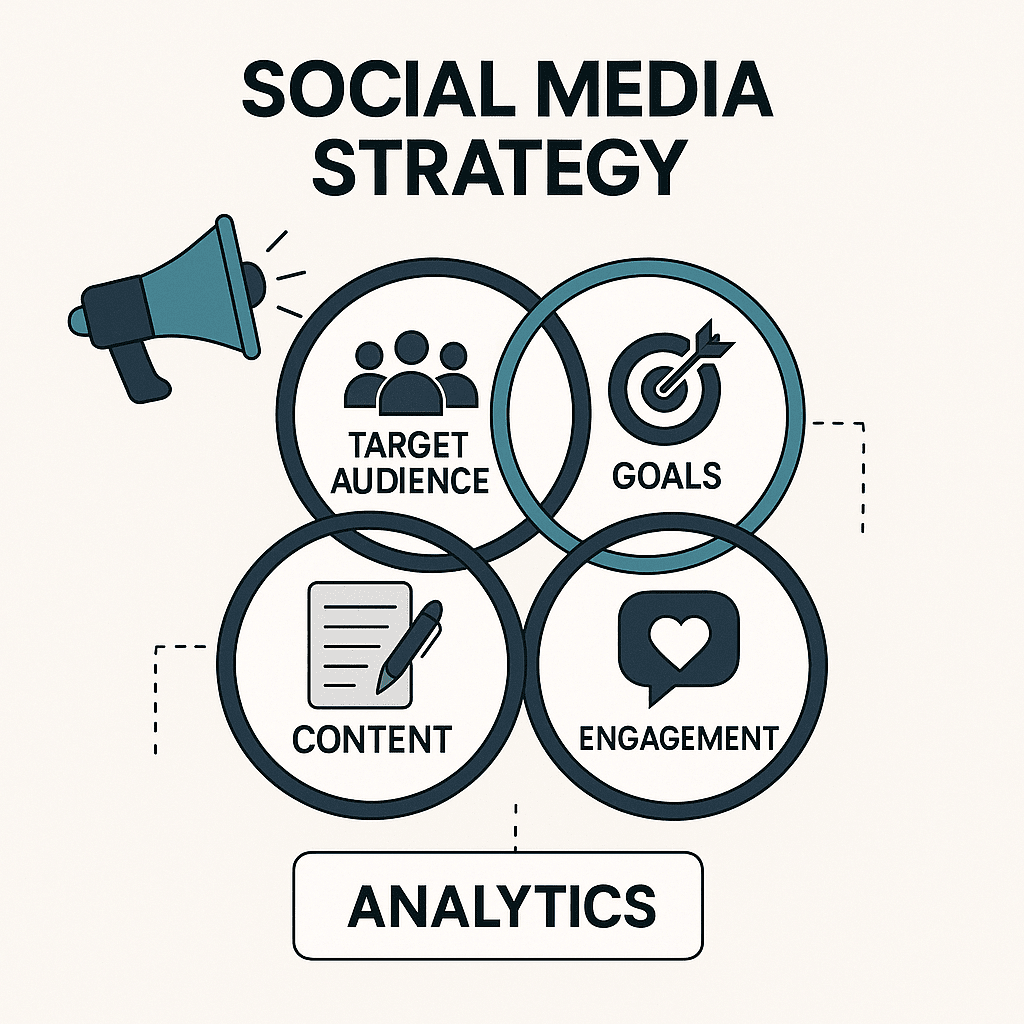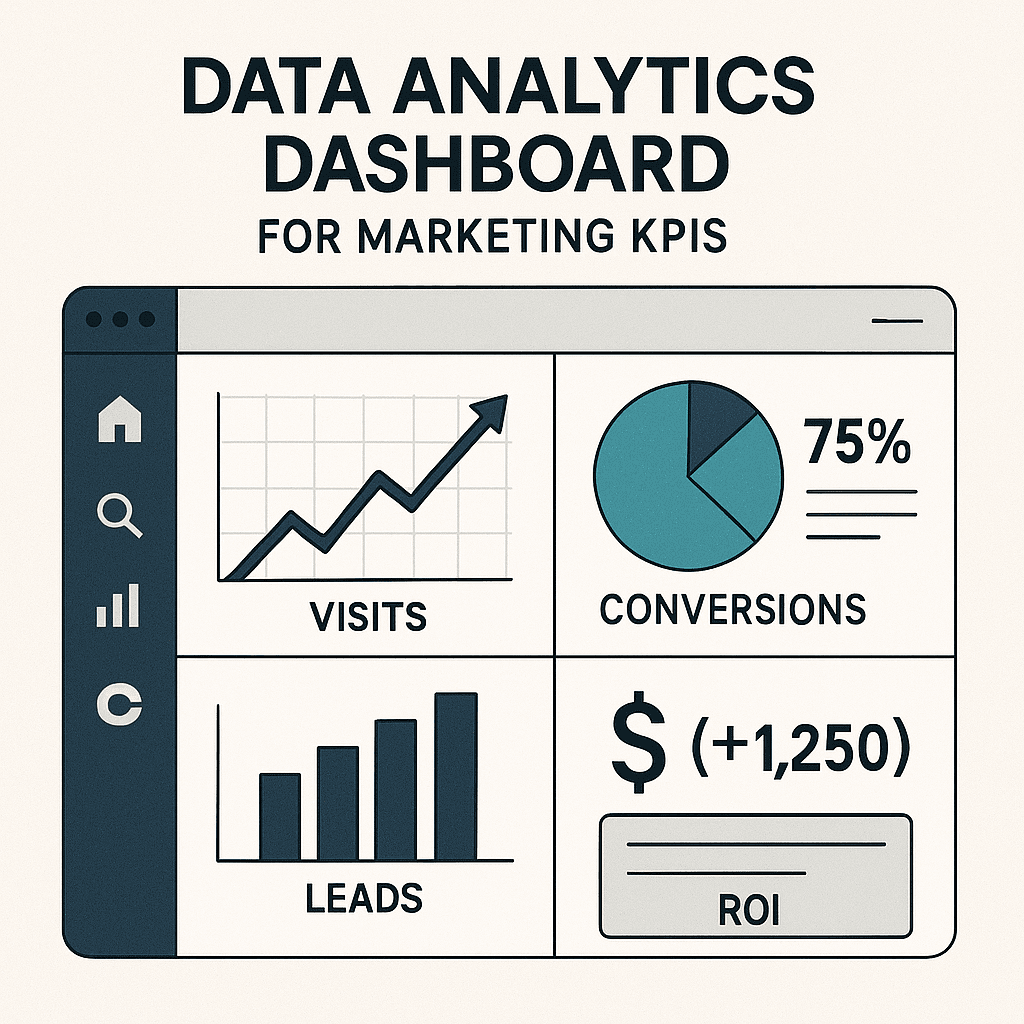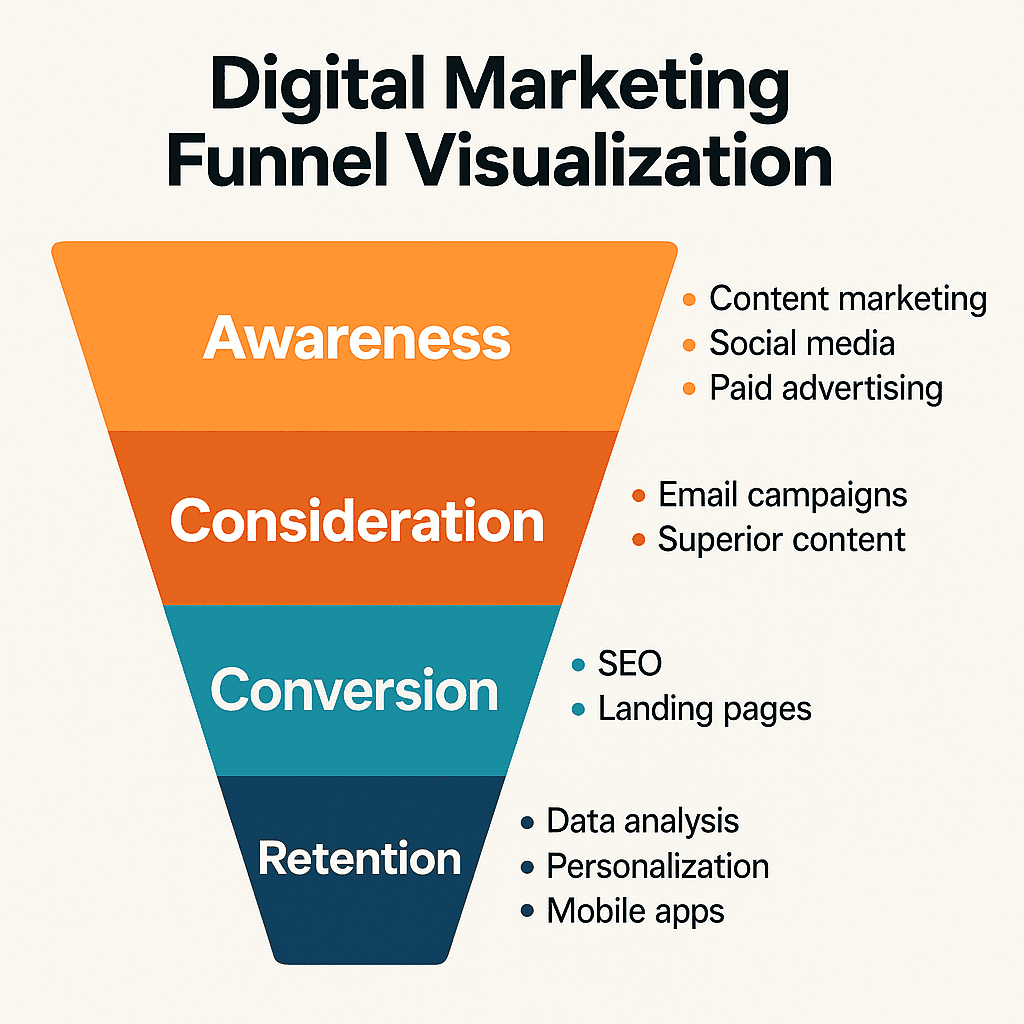Understanding the Role of Digital Marketing in Modern Business Growth
Table of Contents
In the ever-evolving business landscape, digital marketing has transformed from an optional strategy to an indispensable tool for business growth. Companies across the globe are realizing that traditional marketing tactics no longer suffice to compete in a tech-savvy world. Today’s consumers are digital natives who engage with brands online, compare offerings through search engines, and make purchasing decisions based on digital interactions.
Digital marketing not only expands visibility but also enables businesses to connect meaningfully with their target audience. Through personalized, data-driven campaigns, companies can foster trust, loyalty, and ultimately, conversion. The rapid digitization of commerce, fueled by mobile and social platforms, has redefined customer journeys, making it critical for brands to maintain a strong, responsive digital presence.
Defining the Right Target Audience
Success begins with identifying your audience. Without knowing who you’re speaking to, even the most creative campaigns fall flat.
Customer Segmentation
Segmenting your market allows you to categorize customers by demographics, psychographics, behavior, and geography. For example, marketing a premium skincare brand to women aged 25–40 in urban areas with disposable income ensures that your message hits home.
Buyer Personas and Demographics
Crafting buyer personas helps businesses understand their customers’ needs, pain points, and preferences. These fictional yet data-driven profiles guide the tone, content type, and platform choice in campaigns.
Creating High-Quality, Valuable Content
Content is king—but only if it offers value. Successful digital marketing techniques emphasize content that educates, entertains, or solves real problems.
Storytelling and Content Formats
Great brands tell great stories. Whether through blogs, videos, infographics, or podcasts, content that evokes emotion and adds value leads to engagement.
Content That Educates or Solves Problems
Tutorials, how-to guides, industry insights, and thought leadership content establish your business as an authority, fostering customer trust and retention.
Search Engine Optimization (SEO) Best Practices

SEO ensures your content reaches your audience. With billions of searches daily, ranking on search engines like Google is crucial.
On-Page and Off-Page Optimization
On-page SEO includes optimizing meta tags, headers, and keyword density. Off-page SEO, such as link-building and domain authority, enhances trustworthiness.
Keyword Strategy and Backlinks
Using tools like SEMrush and Ahrefs, identify long-tail keywords that match user intent. High-quality backlinks from reputable sources increase your page’s relevance and authority.
Social Media Engagement Strategies

Social media is no longer just a networking tool; it’s a vital marketing channel.
Choosing the Right Platforms
Different platforms serve different purposes. LinkedIn is perfect for B2B, while Instagram and TikTok shine in visual storytelling for B2C.
Influencer Marketing and Brand Building
Partnering with influencers boosts credibility. Their endorsement taps into established communities, delivering authentic outreach.
Leveraging Data Analysis for Smarter Decisions

Tools for Tracking User Behavior
Platforms like Google Analytics, Hotjar, and HubSpot provide detailed metrics. Understanding bounce rates, session durations, and traffic sources helps refine strategies.
Interpreting Analytics and KPIs
Don’t just collect data—act on it. Use KPIs like customer acquisition cost (CAC), conversion rates, and ROI to tweak campaigns.
Staying Ahead of Digital Trends
Embracing New Platforms and Algorithms
Stay informed on updates like Google’s algorithm changes or Instagram’s reels prioritization. Being early on trends ensures competitive advantage.
Adapting to Mobile-First Strategies
With over 60% of traffic coming from mobile, responsive design and mobile-friendly apps are non-negotiable.
The Importance of Mobile Applications
Enhancing UX with Responsive Apps
Apps offer personalized experiences. Push notifications, loyalty rewards, and direct customer interaction streamline the sales funnel.
Direct Engagement Through Mobile
With apps, brands are literally in customers’ pockets—delivering convenience, service, and brand visibility 24/7.
Integrating Paid Advertising Campaigns
PPC vs Organic Strategies
Pay-per-click (PPC) campaigns on Google and social media can quickly drive traffic. When combined with organic SEO, they create a balanced approach.
Budget Planning and A/B Testing
Efficient budgeting and regular testing of ad creatives ensure maximum ROI.
Building a Unified Digital Marketing Strategy
Cross-Channel Marketing
Unifying your message across email, web, social, and apps strengthens brand identity and increases recall.
Synchronizing Messaging Across Platforms
Consistency builds trust. Ensure tone, visuals, and calls-to-action are aligned across all channels.
Real-Life Case Studies of Successful Implementation
Startups and SMEs
Small and medium-sized enterprises (SMEs) often thrive when leveraging niche-focused digital marketing strategies. For example, a local eco-friendly skincare brand used Instagram reels and influencer collaborations to rapidly grow its following. By targeting conscious consumers with educational content on sustainability, they achieved a 50% increase in conversions within three months.
Lessons from Large Enterprises
Major corporations like Nike and Starbucks have long set the benchmark in digital marketing. Nike’s personalized email campaigns and app-based loyalty programs keep customers engaged, while Starbucks utilizes gamification in its mobile app to increase repeat purchases. These giants show that the key to digital dominance lies in personalization, innovation, and a seamless omnichannel experience.
Common Mistakes to Avoid in Digital Marketing
Over-Automation
Automation is helpful, but over-reliance can depersonalize your brand. Auto-responses and generic messaging may alienate users expecting authentic interaction.
Ignoring Audience Feedback
Failing to monitor and respond to customer comments or reviews can harm your reputation. Use feedback loops to improve products, services, and communication.
Digital Marketing Tools Every Business Should Use
CRM and Email Marketing Tools
Customer Relationship Management (CRM) tools like Salesforce or Zoho help maintain detailed customer data. Email platforms like Mailchimp and ConvertKit offer automation features that enhance lead nurturing and conversion.
SEO and Analytics Software
Tools like SEMrush, Moz, and Google Analytics are essential for tracking site performance and search engine rankings, while platforms like Hotjar reveal user behavior via heatmaps and session recordings.
Measuring Success in Digital Marketing Campaigns
Setting Clear Goals and Benchmarks
Define what success looks like before launching a campaign. This could be website traffic, social shares, sign-ups, or direct sales.
ROI Tracking and Optimization
Use data to assess return on investment (ROI). Platforms like HubSpot allow for attribution tracking to see which channels yield the most conversions.
Frequently Asked Questions (FAQs)
Q1: What is the most effective digital marketing technique for small businesses?
A1: Targeted content marketing combined with local SEO tends to yield the best results for small businesses. These approaches are cost-effective and deliver high engagement.
Q2: How often should I update my digital marketing strategy?
A2: Reassess your strategy quarterly. This allows enough time to collect data, test variations, and respond to trends.
Q3: Is SEO still relevant?
A3: Absolutely. SEO is more crucial than ever, especially with the rise of voice search and mobile optimization. It helps businesses gain organic visibility and credibility.
Q4: Can I rely solely on social media for marketing?
A4: While social media is powerful, relying solely on it is risky. Algorithm changes or platform outages can affect reach. Diversify across email, SEO, and paid ads.
Q5: How do I choose the right social media platform for my business?
A5: Identify where your audience spends their time. B2B companies might focus on LinkedIn, while fashion brands may thrive on Instagram or TikTok.
Q6: What’s the future of digital marketing?
A6: The future includes increased personalization through AI, interactive content, and immersive experiences like AR and VR.
Conclusion: Building a Resilient Digital Future
In this digital-first era, businesses must adopt a multifaceted digital marketing approach to stay competitive. From defining your target market to executing data-driven campaigns, each element plays a pivotal role in ensuring sustainable growth. The integration of SEO, content creation, analytics, mobile engagement, and cross-platform synergy can position any business for success.
As the digital landscape continues to evolve, adaptability, creativity, and customer focus will separate thriving brands from the rest. By leveraging the proven digital marketing techniques discussed in this article, businesses can enhance visibility, improve engagement, and drive long-term profitability.
Reference: https://journal.pandawan.id/sabda/article/view/429
Read More: https://growthegy.com/2025/05/23/best-business-growth-strategies-2025/


Leave a Reply